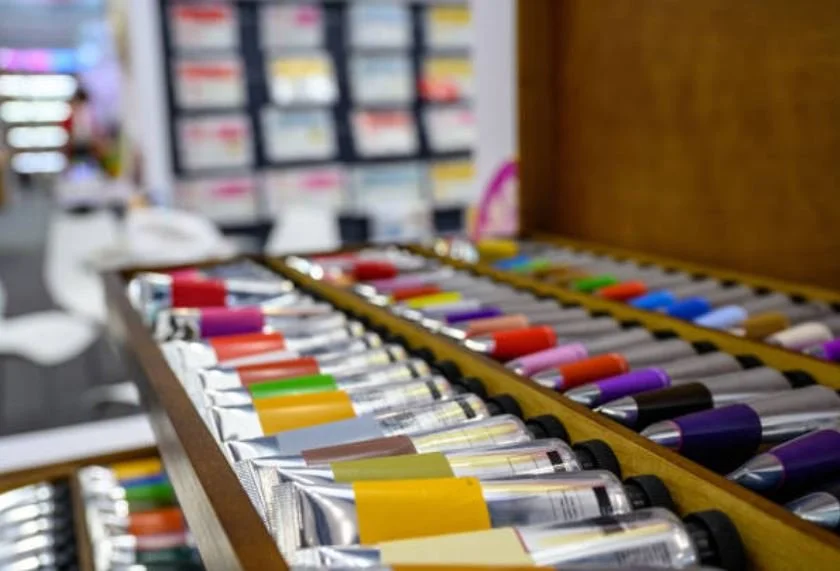Getting Started In Oil Painting- Essential Supplies and Tips
Getting started with oil painting doesn’t require a studio full of tools or dozens of tubes of paint. As a beginner, you only need a few quality supplies to dive into the world of oil painting and begin building your skills.
Here are the basic oil painting supplies you’ll need:
Oil paints
A palette
Brushes
A canvas
An easel
(Optional) A painting medium like linseed oil
Let’s take a closer look at each one.
1. Oil Paints
Your paints are the heart of your toolkit. While there are countless shades available, beginners don’t need to collect every color. Instead, start with a curated set that includes both warm and cool variations of primary colors, along with key earth tones and black and white. This setup allows you to mix a wide range of hues without overwhelming your workspace or budget.
A recommended beginner palette might include:
White
A warm and cool yellow
A warm and cool red
A few earth tones like burnt umber or terracotta
A warm and cool blue
A green or two
Black
Choosing professional-grade paint—even as a student—can make a big difference. Lower quality paints may have less pigment, resulting in streaky or inconsistent coverage. If you have these issues, it may be difficult to tell if it is the paint or your technique causing the issue. Using dependable, high-quality paint removes one variable from the learning process and helps you better understand your technique and progress.
Many professionals use these brands (in no particular order):
Michael Harding
Old Holland
Blue Ridge
Gamblin
Williamsburg
Winsor-Newton
Gamblin is known for finding a balance between high quality and cost. Winsor-Newton has a lower-cost student paint of acceptable quality called Winton.
2. A Palette for Mixing
Once you have your paint, you’ll need a surface to mix it on. There are several options:
Disposable palette paper
Tempered glass panels (what Ellen often uses)
Primed wooden boards
Even wax paper or ceramic tiles
Choose a palette that suits your workspace and makes cleanup easy. Some artists prefer the ease of tearing off used palette sheets, while others like the sturdiness of a reusable surface.
3. Paint Brushes
It’s easy to get overwhelmed by the vast array of brush shapes and sizes. For beginners, keeping it simple is best. A couple of medium-sized brushes with a rounded, slightly tapered shape (known as filberts) will allow you to both blend softly and apply paint with control.
A basic setup might include two larger filbert brushes—one dedicated to light areas and one for shadows. These versatile brushes are ideal for general work, and you can expand your collection as your style develops.
4. A Canvas
Not all surfaces are equal, and starting with a properly prepared canvas is important. Look for pre-stretched cotton or linen canvases that are already primed for oil painting.
Small to medium sizes, such as 9” x 12”, are ideal for beginners. They provide enough room to explore without being intimidating or time-consuming to fill. Over time, you can experiment with different textures and sizes to see what best supports your technique. Ellen often paints on wood board. You’ll find your niche too.
5. An Easel
An easel helps you maintain good posture and keeps your perspective accurate while you paint. You don’t need a full studio setup to begin—compact tabletop easels work well if space is limited.
Look for an easel that’s stable and adjustable. When you’re ready to invest further, consider a sturdier floor-standing easel that allows you to work on larger pieces or stand while painting.
6. (Optional) Mediums like Linseed Oil
While you can use oil paint straight from the tube, many artists find that adding a bit of medium helps improve paint flow and blending.
Linseed oil is one of the most traditional and widely used painting mediums. A small amount can thin paint, enhance transparency, and extend drying time. Cold-pressed linseed oil is often preferred for its purity and handling qualities.
Though not essential for beginners, a good quality medium can be helpful as you explore different effects and textures.
Final Thoughts
In setting up a place to paint, it would be ideal to have a daylight window at a 45 degree angle to your canvas, so you can stand at your canvas without casting too much of a shadow. You can also supplement your room lighting by swapping out light bulbs to mimic daylight (5000K-6500K).
You don’t need a closet full of tools to begin oil painting—just a few high-quality basics. By investing in good materials from the start, you’ll eliminate unnecessary frustrations and be able to focus on building your skills.
Choose a limited but versatile palette, grab a couple of reliable brushes, prep a canvas, and set up your easel and workspace. Always remember to clean your brushes promptly- they are part of your investment. As you grow as a painter, you’ll learn more about the tools and techniques that work best for you.
Happy painting!
